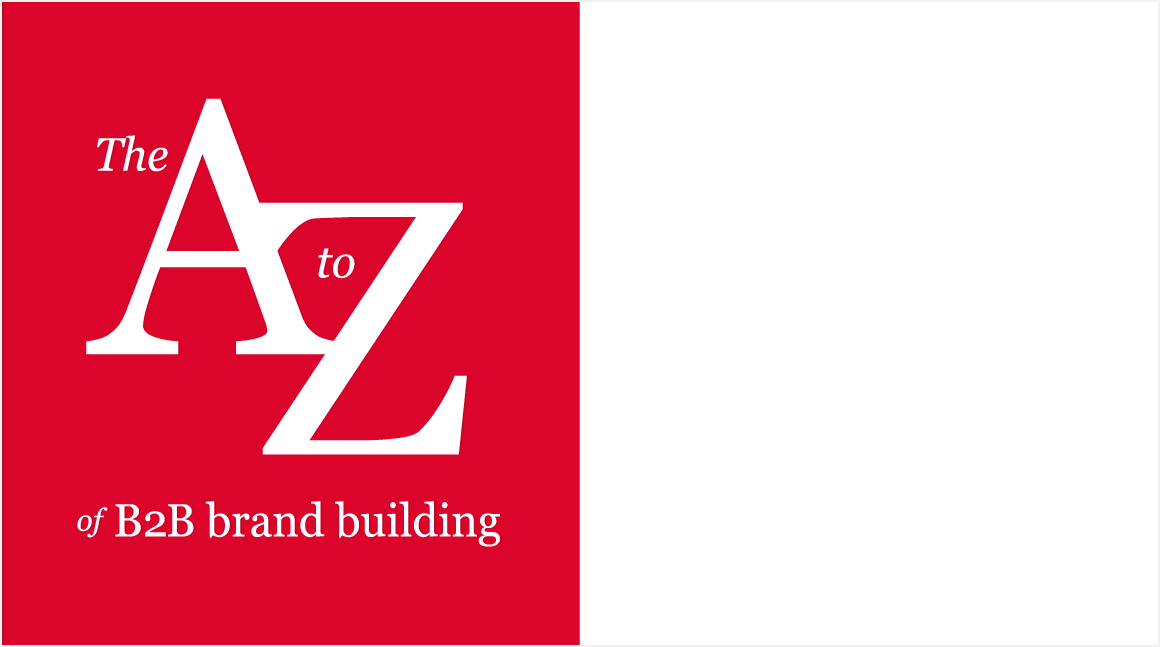Brand curiosity in B2B marketing

C is for…Curiosity
“Curiosity and creativity are never far apart. You need to be curious to identify problems worth solving, and then come up with new solutions”
Lorraine Twohill
CMO at Google
Where would we be without it?
A lot of innovations, and human advancement more generally, appears to hinge on one very important question:
“What if…?”
So, what if people never asked that? Never questioned the status quo. Where exactly would we be? To quote a hackneyed example, we’d still be living in caves. But even if we weren’t, we certainly wouldn’t be enjoying the myriad of products, ideas and opportunities that we do if it weren’t for one thing…. curiosity.
It’s the driving force that makes us see things differently, makes us question our own bias and compels us to explore different approaches in every aspect of life. And it’s as crucial in the world of B2B as it is anywhere else.
It’s FUNdamental
One of our primary values at mark-making* is “Serious about play”. And believe us, we do take it seriously. At the very core of this thought is curiosity. We place a value on playing with concepts, on seeing things from multiple perspectives and on asking questions that push our understanding further.
By playing around with ideas, we force ourselves to consider things differently, even introducing aspects of other fields to inform the work we do. For us, that’s key. B2B marketing should never be viewed in isolation – it’s a part of a multi-faceted world. So, as ideas morph and develop through curiosity, they’re inevitably galvanised by the influence of our own inquiring mind and those of others. It all leads to a much more authentic proposition that has an organic place in the real world. No brand is an island.
It’s not the enemy of efficiency
B2B is, of course, a pressurised environment. Deadlines are tight and success is often measured by metrics, data and sales. But just because you can’t commoditise curiosity, doesn’t mean it doesn’t have a vital place in B2B.
In the early 1900s, Henry Ford set about creating a car for the masses by minimising production costs. This efficiency-based model resulted in the Model T – a car which was so successful that by 1921, Ford had a 56% share of the passenger car market in the US.
But by the late 1920s, what the market had demanded changed.
They wanted variety, innovation, choice. The Ford model of supply and demand no longer cut it and sales plummeted. Why? Because while Ford were concerned about replicating the same idea as many times as possible, other manufacturers were still designing, still innovating and still being curious. And these same brands became better placed to meet consumer needs.
That’s the thing about curiosity – it’s constantly reinventing itself. It’s the Madonna of brand values. And because it’s always pushing forward, it never dates. It has true longevity. What’s more, it gives brands the agility to adapt to ever-changing market forces. And this reactivity is as vital now as it was in Ford’s day – arguably more so.
Curiosity leads to connection
One of the clearest examples of how we champion curiosity is in how we go about developing a brand’s strategy. Our consultative phase is always approached with a completely blank canvas, and open minds act as the fuel for generating a brand’s values, personality and, subsequently, its identity.
When we’re in the Define stage of a project, we always start by asking open questions. And then, we ask some more. And then, for curiosity’s sake, we ask some more again. It’s this process of continual questioning which helps us get under the skin of what a brand should be and how it should express itself.
But not only that, it also leads us to connect.
We connect the experience of other brands in a sector – and outside of it. We connect one individual’s brand vision with another’s. And, most importantly, we connect with each other. That’s what curiosity does. It forces us to listen – actively – to others, to find understanding of another perspective and to create solutions that mediate a plethora of opinions, factors and ideas.
Curiosity breeds collaboration, feeds creativity and generates empathy. In many ways, it’s the foundation of strong human relationships. So, for us, it’s the very lifeblood of B2B – and encapsulates what we mean by B2B more human.
Nature needs nurture
Of course, curiosity is something which comes naturally to us as humans. The desire to learn and keep learning is key to our success as a species. But in our fast-paced, results-driven world, we need to consciously cultivate it, too.
It’s why we don’t just prioritise curiosity at the start of a project. We continue to flex our curious models in all the work we do.
When it comes to working on B2B campaigns, curiosity is involved in nearly every – if not every – deliverable we produce.
If me and my creative partner threw out each other’s ideas straight away, we’d have a very strained relationship. On the flip side, if we accepted them verbatim every time, our output would be far from ideal. Instead, it’s a process of dialogue, of building on ideas and of questioning how to push forward. Sometimes it’s messy. Sometimes it’s frustrating. Sometimes it’s downright painful. But it’s always rewarding. Because that’s what it is: the creative process is, well….curious.
About markmaking*
markmaking*